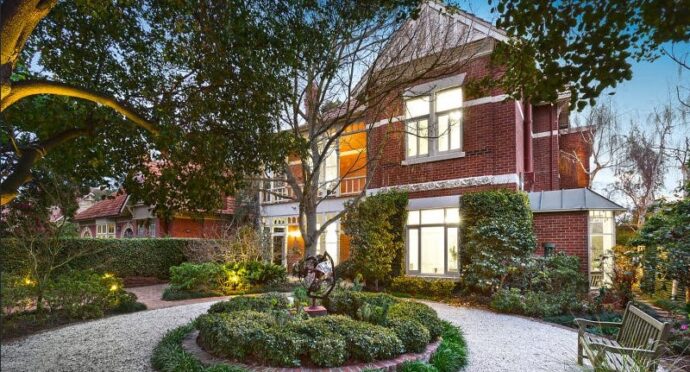Australians have enjoyed a long love affair with period homes.
I thought of writing this article not only to explain what contributes to the desirability of period homes in Australia but also to summarise the main styles of architecture and to showcase some examples.
—
First, here are the key attractions…
Limited Supply and High Demand
Period homes belong to a specific historical period, therefore their numbers are finite and there is a natural scarcity. Limited supply coupled with high demand can result in capital appreciation over time.
Historical Character and Charm
Period homes exude a unique character and charm that is hard to replicate in modern constructions. The ornate craftsmanship and historical features create a sense of connection to the past and have high emotional appeal especially for owner-occupiers.
Location, location, location
The oldest surviving homes in Australia tend to be concentrated in the inner suburbs of the big cities close to train stations. As a result, period homes are often well located with access to high-income employment and ample amenities only short distances away.
Stability and Resilience
Period homes, when well maintained (maintenance is key!), have proven to be resilient structures which have withstood the test of time. The durability of their construction materials combined with their high quality craftsmanship often results in homes that are not only aesthetically pleasing but also structurally sound.
Potential for Renovation
Many buyers are drawn to the prospect of restoring a period home to its former glory and/ or customising it to meet modern needs. Renovating period homes is not for the faint-hearted, as it can be costly and time consuming, however it allows owners to benefit from the best of both the past and present if accomplished successfully.
—
Some favourite examples…
Here are some of my favourite examples of period homes near me in Melbourne, sorted by the most prominent styles of period architecture…
Mid-late Victorian homes, period 1870-1901
Mid to late Victorian dwellings reflected the rising wealth of the nation and the houses became more ornamental and elaborate.
Key features and characteristics:
- Decorative features such as parapets (protective detailing along roof edges), porticos (covered entrance porches), columns, iron lacework and patterned tile floors
- Ceiling roses and ornate skirtings and architraves internally
- Timber windows, either double or triple hung
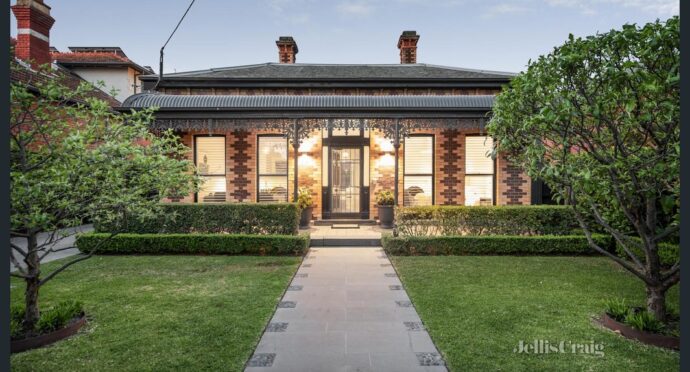
Victorian home: Claremont Avenue, Malvern – photo realestate.com.au
Federation/ Queen Anne style homes, period 1895-1910
Derived from English and American styles that revived elements from the architecture of Queen Anne’s reign (1702-14), Queen Anne style houses are picturesque and deliberately complex, creating a kind of vigorous grandeur.
Key features and characteristics:
- Large houses often set back on the block
- Terracotta roof tiles
- Elaborate verandas
- Bay windows and lead lights
- Tall chimneys and high pitched roofs
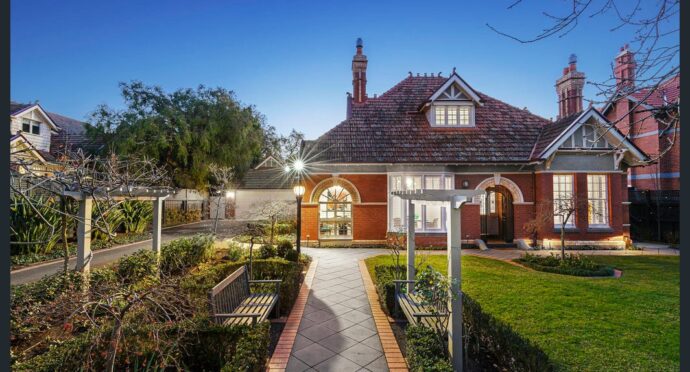
Queen Anne home: Finch St, Malvern East – photo realestate.com.au
Federation/ Edwardian homes, period 1890-1915
Although similar to Victorian and Queen Anne styles, Edwardian architecture was less ornamental and architects began to find a stronger Australian identity.
Key features and characteristics:
- Prominent front gables
- Red brickwork with rendered, cream painted bands around the building
- L-shaped verandas with timber embellishments and fretwork
- Australian motifs such as kangaroos and emus or rising sun emblems
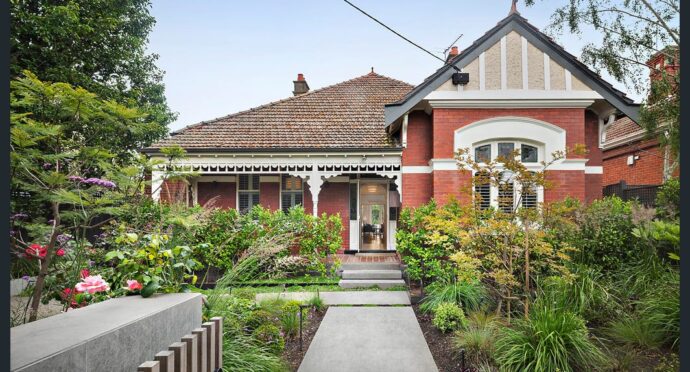
Edwardian home: Glendearg Grove, Malvern – photo realestate.com.au
Bungalow style homes, period 1910-1930
The Bungalow house reflected a more American architectural style and more relaxed way of living. Bungalow houses are often single story and champion the use of natural materials.
Key features and characteristics:
- Built from red brick or weatherboard
- Low, pitched or gabled roofs made from terracotta tiles or corrugated iron painted red or green
- Thick columns holding up the front veranda
- Windows double hung with stained glass
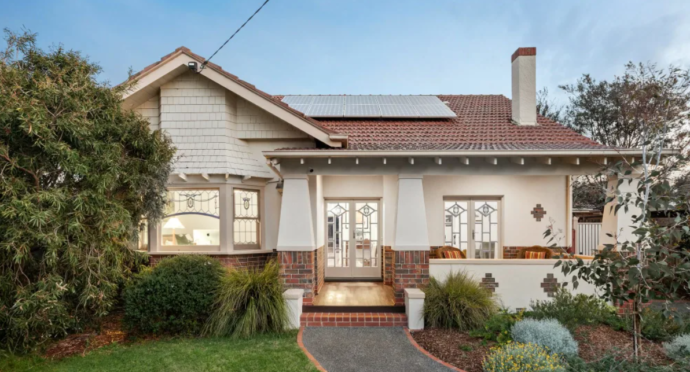
Bungalow: Cole St, Brighton – photo realestate.com.au
Mid-Century Modern homes, period 1950-1980
While not technically period homes, mid-century modern homes are still popular throughout Australia and unique remnants of the historical period in which they were constructed. Most councils are also now reviewing their significant mid-century modern houses for heritage protection.
Mid-century modern architecture appreciates open floor plans with low roofs. Houses are designed to blend indoor and outdoor elements.
Think atriums, sliding glass doors and floor to ceiling windows to let in lots of light.
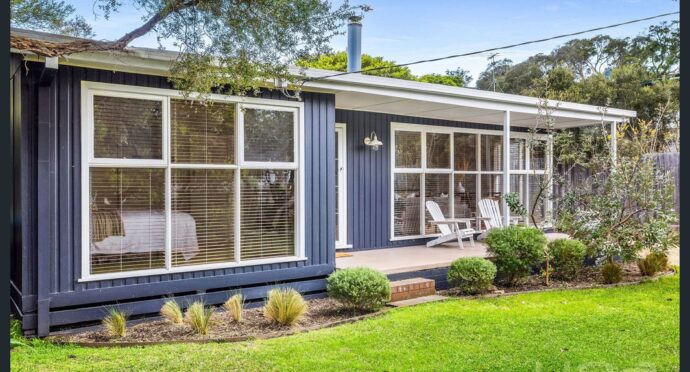
Mid-century modern home: Fairsea Grove, Rye – photo realestate.com.au
—
In summary, period homes are really about scarcity, combined with the perceived ‘status’ of owning an ornate home from yesteryear, with strong owner-occupier appeal.
This can correlate into people paying emotional prices for these types of properties which drives up values.
However while some find the unique and detailed furnishings of period homes hard to resist, others are turned off by the thought of costly repairs and in some cases heritage restrictions.
Thorough due diligence together with pre-purchase building & pest inspections are essential in terms of reducing the risk of unforeseen costs.
Modern dwellings, which tend to cater more for more modern living preferences, have many advantages, for example they often have more open/ free flowing floorplans, superior energy efficiency, more natural light and better airflow.
It is ultimately up to the individual to decide which is better for them.
Renovating period homes can result in the best of both the past and the present, so long as you have the budget, the time/ patience, and the tolerance for risk.
—
Long Property blog content provides general information only and has been prepared without taking into account your objectives, financial situation or needs. We recommend that you consider whether it is appropriate for your circumstances and your full financial situation will need to be reviewed prior to acceptance of any offer or product. Nothing on the Long Property website constitutes legal, tax or financial advice and you should always seek professional advice in relation to your individual circumstances.
